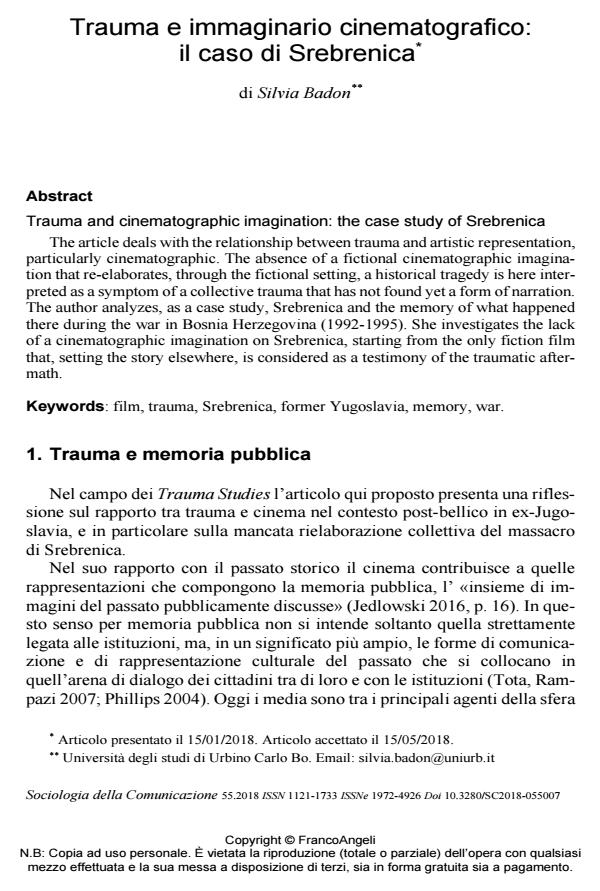Trauma and cinematographic imagination: the case study of Srebrenica
Journal title SOCIOLOGIA DELLA COMUNICAZIONE
Author/s Silvia Badon
Publishing Year 2018 Issue 2018/55
Language Italian Pages 13 P. 104-116 File size 196 KB
DOI 10.3280/SC2018-055007
DOI is like a bar code for intellectual property: to have more infomation
click here
Below, you can see the article first page
If you want to buy this article in PDF format, you can do it, following the instructions to buy download credits

FrancoAngeli is member of Publishers International Linking Association, Inc (PILA), a not-for-profit association which run the CrossRef service enabling links to and from online scholarly content.
The article deals with the relationship between trauma and artistic representa-tion, particularly cinematographic. The absence of a fictional cinematographic im-agination that re-elaborates, through the fictional setting, a historical tragedy is here interpreted as a symptom of a collective trauma that has not found yet a form of narration. The author analyzes, as a case study, Srebrenica and the memory of what happened there during the war in Bosnia Herzegovina (1992-1995). She investigates the lack of a cinematographic imagination on Srebrenica, starting from the only fiction film that, setting the story elsewhere, is considered as a testimony of the traumatic aftermath.
Keywords: Film, trauma, Srebrenica, former Yugoslavia, memory, war.
Silvia Badon, Trauma e immaginario cinematografico: il caso di Srebrenica in "SOCIOLOGIA DELLA COMUNICAZIONE " 55/2018, pp 104-116, DOI: 10.3280/SC2018-055007